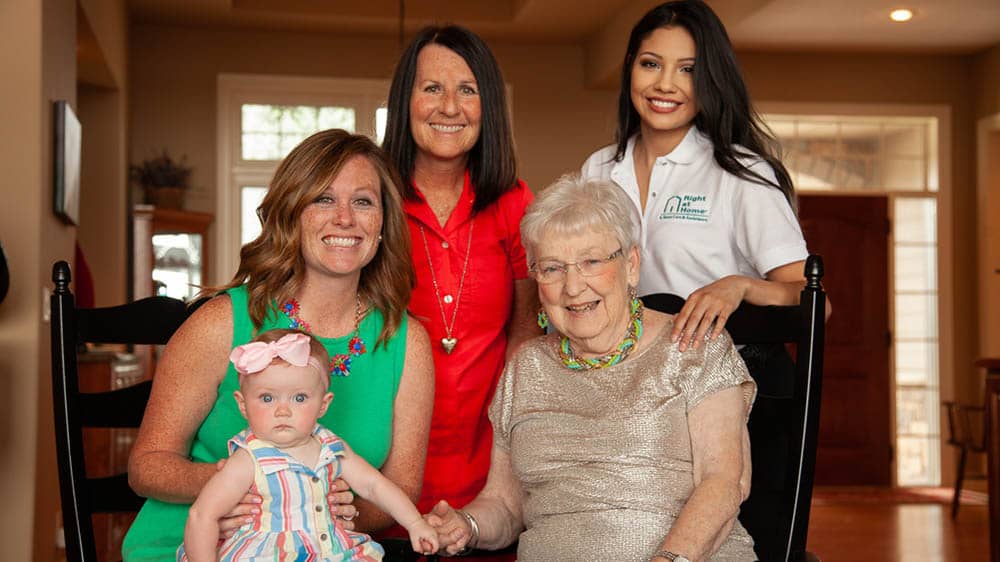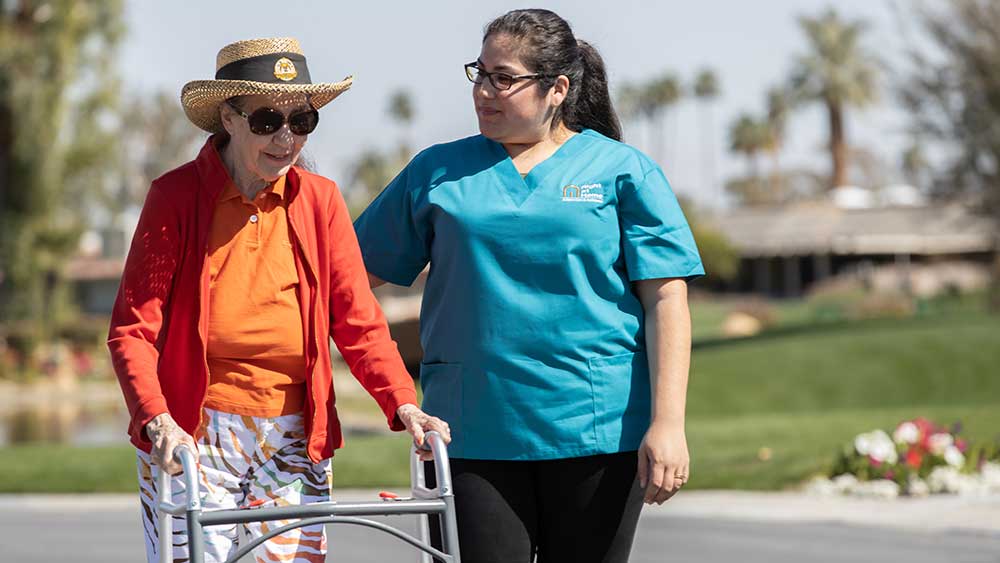

The Unseen Challenges of Caregiving
Being a caregiver is a role that millions undertake out of love, dedication and necessity. It’s a role that might be “invisible” to people not directly involved, but its challenges are much more than others might realize.
Consider this anecdote from a Time magazine article: “When Nancy Daly was helping to care for her late mother, who had Alzheimer’s disease, the stress was so great that she would often shut herself in a bathroom and cry into a towel.”
Here at Right at Home, we think of all caregivers as heroes. Whether it’s an unpaid family caregiver or someone who has chosen a caregiving career, the role is critical to those who need help. But what is it really like? Understanding some of the less-discussed challenges caregivers face may inspire more people to appreciate their work.
The Emotional Weight
“Am I doing enough?” “Do I really have time to go to a movie?” Caregivers often carry a heavy emotional burden. They may experience feelings of guilt, especially when they feel they’re not doing enough or when they take time for themselves. They may even experience anger, as a parent caring for her sick child told Oncology Nursing News. She said, “I was … angry about what was happening to my child … angry at the universe. Underneath the anger, I never felt so helpless in all my life.”
As a loved one’s—or a client’s—health fluctuates, the resulting emotional roller coaster can cause continuous stress and anxiety.
The Physical Toll
The physical demands of caregiving are often underestimated. Yes, caregivers may do things like household tasks or keeping the care recipient comfortable. But if the care recipient has mobility issues, the caregiver may need to help them transfer from their bed to the toilet, for example, or help them into an accessible van. Over time, these responsibilities can lead to physical strain, exhaustion, and even health issues for the caregiver. “Caregivers are at increased risk for serious illnesses, such as depression and cancer, and suffer a higher mortality rate than noncaregivers,” according to an article in The New York Times.
Financial Strain—Especially for Veterans
Many caregivers face financial challenges. While they provide care without pay, they often incur expenses related to the care of their loved ones. This financial burden can be compounded if the caregiver has to reduce their work hours or even quit their job to provide care. And the AARP recently reported that family and others who provide care for veterans spend on average 1.5 times more than what other family caregivers spend.
Social Isolation
Caregiving can be isolating. The time and energy demands often limit the caregiver’s ability to maintain social relationships, making them feel lonely and disconnected from others. Caring for someone with more than one health problem can compound the loneliness, according to a study published in the International Journal of Geriatric Psychiatry. “Caregivers of people with both brain health and physical conditions were the most burdened,” the authors wrote. These caregivers had “the highest levels of loneliness and isolation compared to caregivers of people with either a brain health or physical condition only.”
The Juggling Act
For “sandwiched” caregivers, who also have families of their own, the challenge is twofold. They must balance the needs of the person they’re caring for with the needs of their own family. Additionally, many caregivers are juggling employment, whether it’s a job outside the home or remote work. This adds another layer of complexity to their lives as they strive to manage their career responsibilities along with caregiving duties—a crucial aspect, given that working is usually a financial necessity.
Lack of Recognition and Support
One of the hardest parts of being a caregiver is the lack of societal recognition and support. Caregiving is often not seen as “real work,” and caregivers may struggle to find adequate resources, support and respite care.
The role of a caregiver is complex and challenging, touching every aspect of life. It’s a role that deserves recognition, support and understanding. As individuals, we can all help caregivers in some way. You’ve taken the first step by reading this article. As a society, we need to provide better support systems for caregivers. Their role is indispensable to all of us.
Why not take some inspiration from National Caregivers Day on February 16? This day honors people who selflessly provide personal care, plus physical and emotional support, to those who need it most. Find a way to thank a caregiver, and lend them a hand if you can.
If you’re a family caregiver, remember that Right at Home is here to help! Right at Home’s trained caregivers can help with a range of services, from meal preparation and light housekeeping to assistance with hygiene and mobility. Contact your local Right at Home office to learn about its specific services.
Interested in receiving monthly tips, advice and information related to caring for an aging loved one? Subscribe to our Caring Right at Home e-newsletter today.







